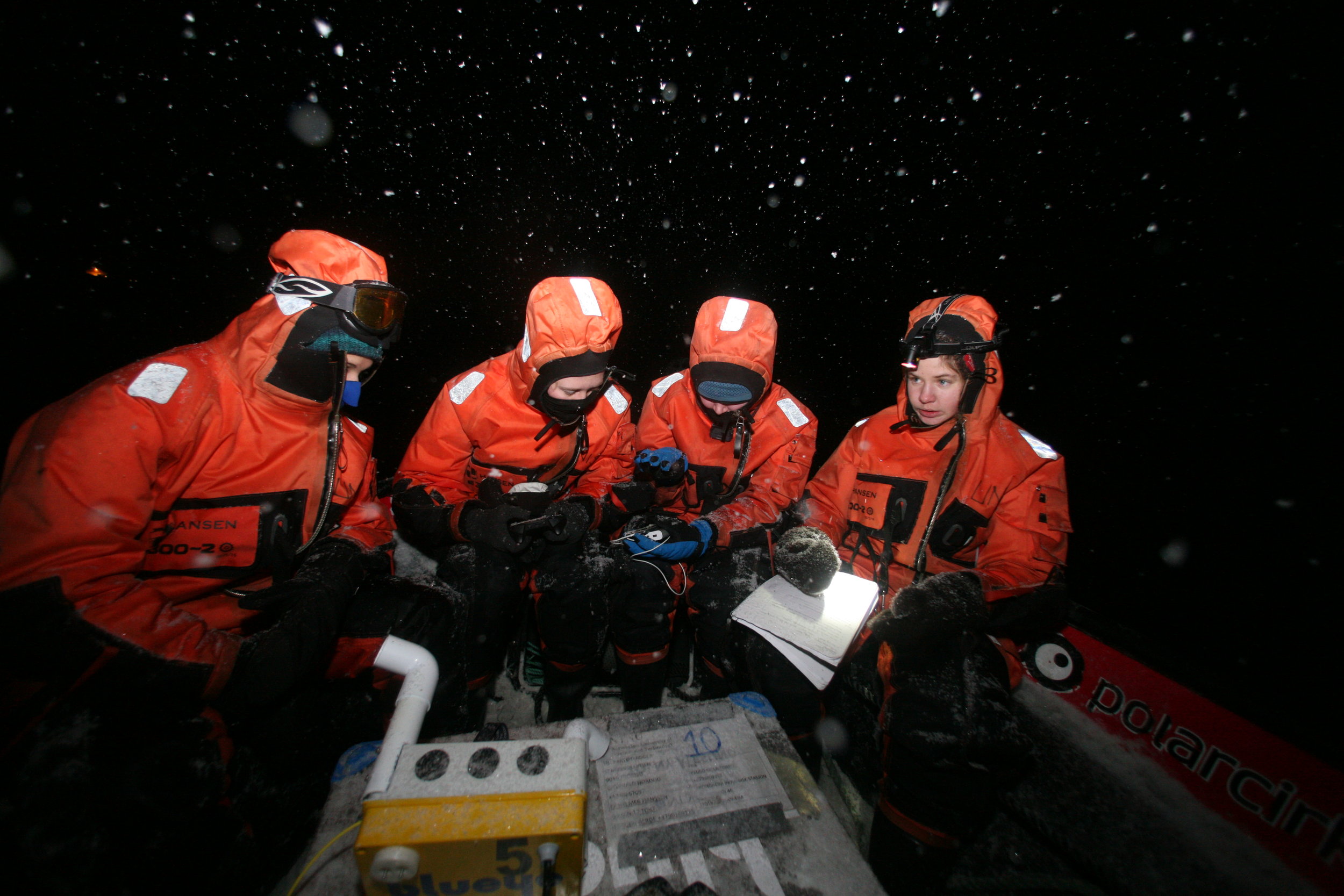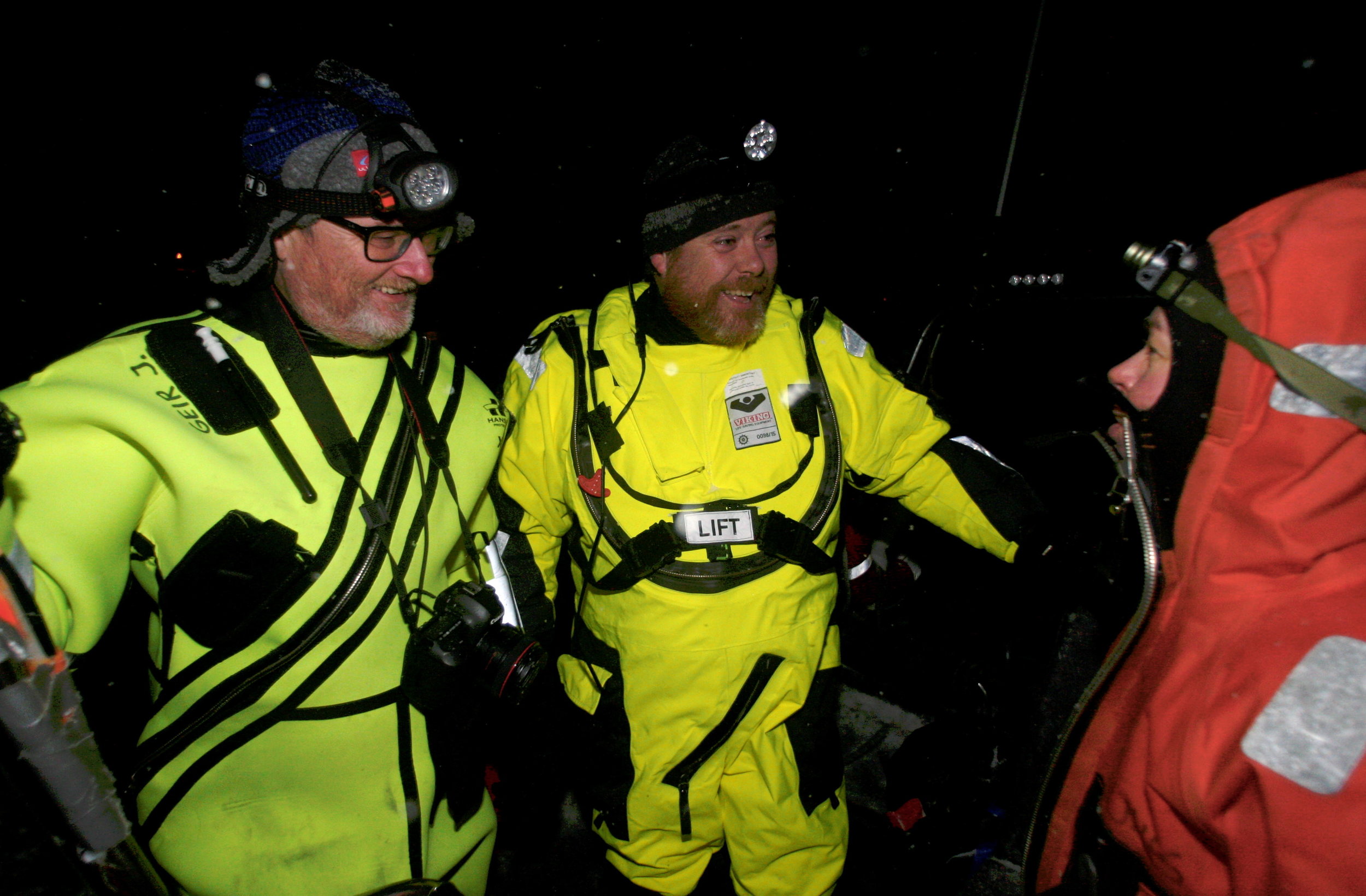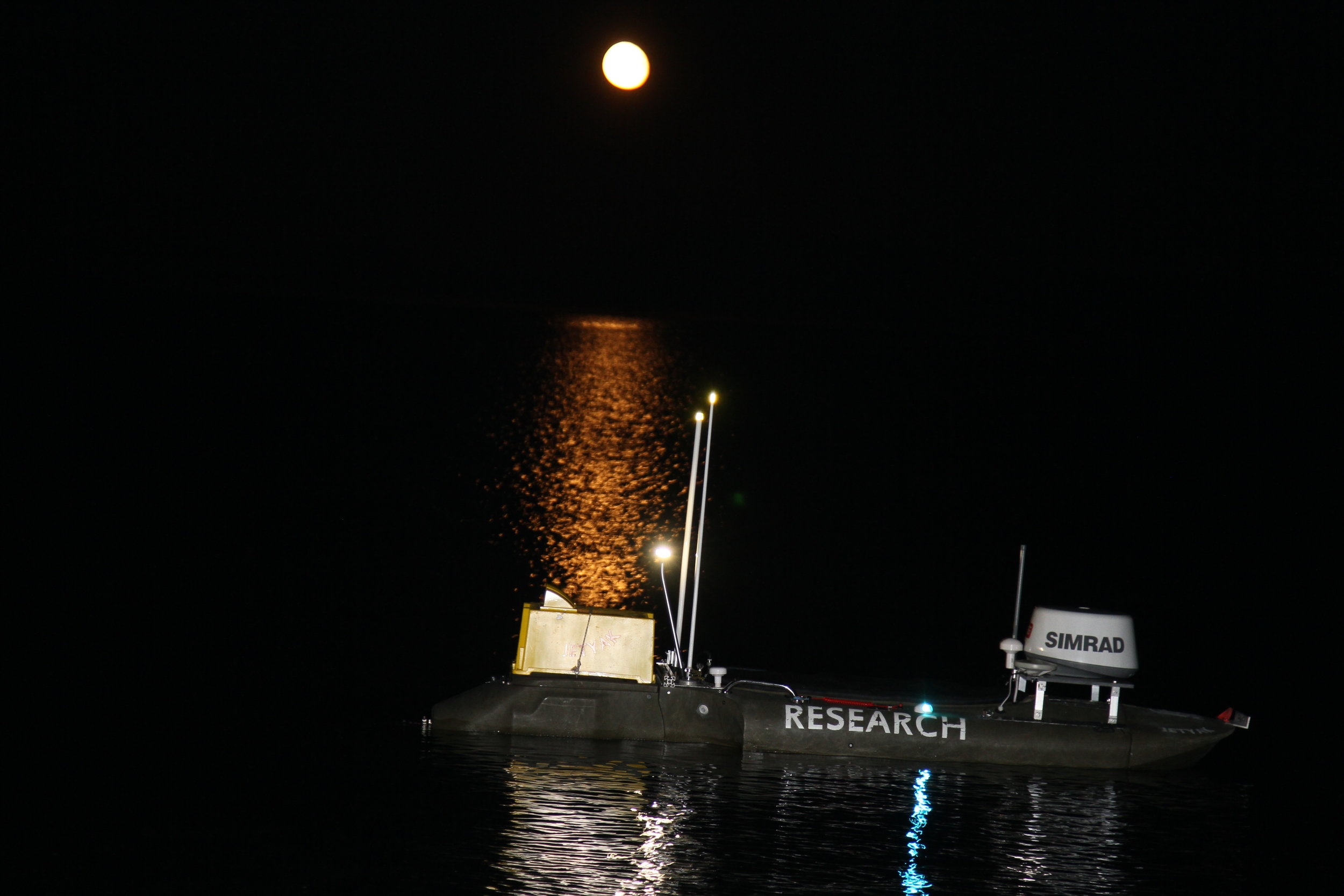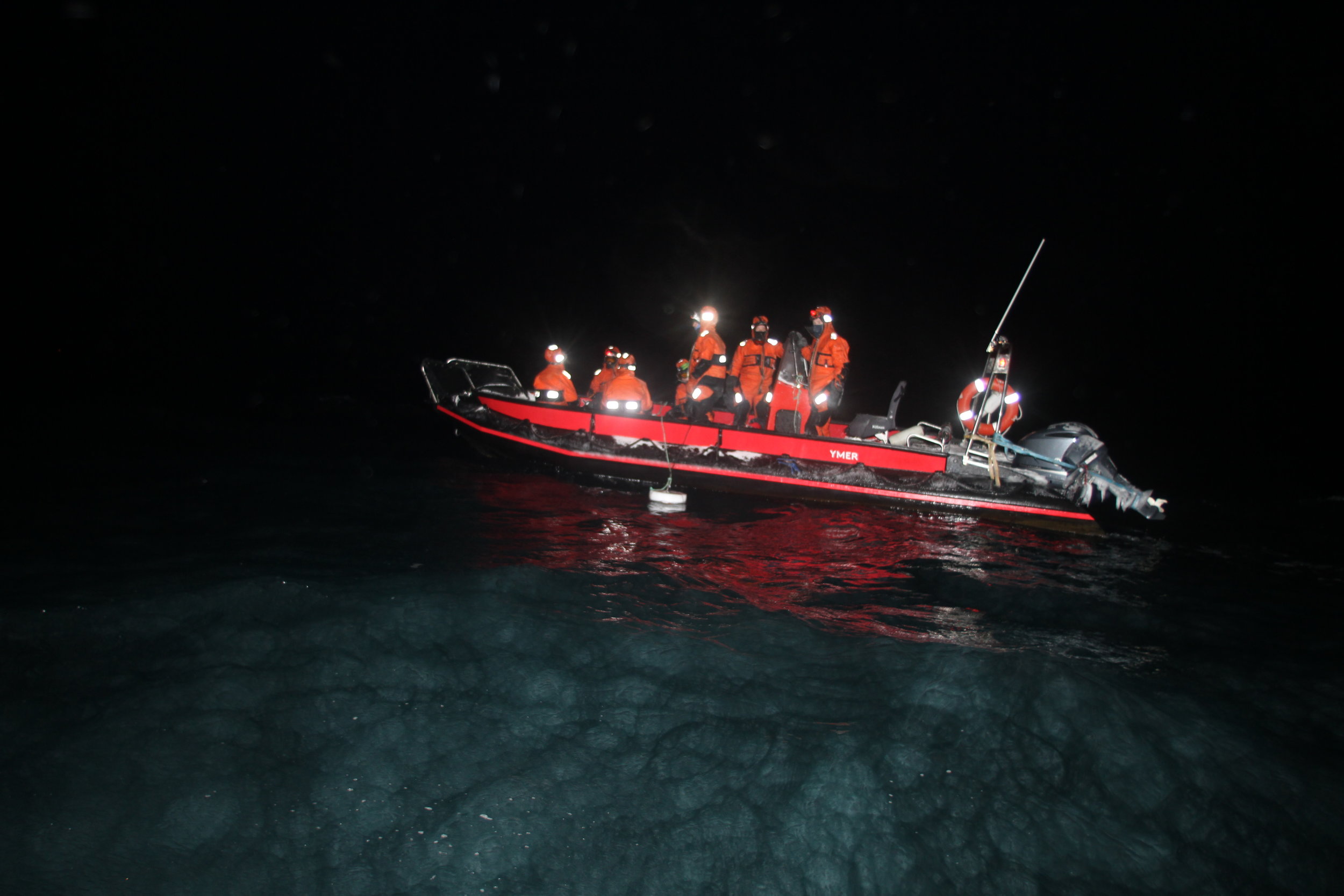Innovative Research Sheds Light on Marine Life During the Polar Night
For a long time, no one believed that there was much activity in the Arctic Ocean during the polar night, but recent discoveries show that it is teeming with life, from small zooplankton to fish and seabirds. Moonlight is enough to affect the life forms in icy waters during the winter.
During the past few winters, various experiments have been done in Kongsfjorden on Spitsbergen to study marine life in the dark polar night. This year’s experiments have employed four unique submarine vessels as well as an advanced automated kayak that registers everything from small algae to seabed, from fish to temperatures.
Biologists collaborate closely with technologists, and robots provide answers to questions that scientists have pondered for a long time.
Pitch dark and cold all the time
This year, about 30 scientists, technicians and students from eight countries took part in the research, with Ny-Ålesund as their base. At least as many experts were on board the research vessel Helmer Hansen, which stayed near edge of the sea ice at about 82°N.
“It’s fantastic to be able to collaborate with the people who are developing the robots”, says Susanna T. Thorbjørnsen from the University of Agder, who is taking a PhD in marine coastal ecology. After a fortnight in Ny-Ålesund, where they spent a lot of the time out in boats gathering various samples, the students continued to the University Centre in Svalbard (UNIS) in Longyearbyen, to evaluate their finds.
Thorbjørnsen came more or less straight from field studies in Australia, experiencing a difference in temperature of 50°C. Nonetheless, she smiles in the boat as she and the other students scrutinise their screens to see what the robot is filming on the seabed. Some steer the submarine drone, while others read off data.
“You quickly forget the cold,” says Thorbjørnsen. “This is exciting!” She watches in detail as small snails cling to a kelp stalk.
Long-standing collaboration
Biology professors Jørgen Berge from UiT The Arctic University of Norway, and Geir Johnsen from the Norwegian University of Science and Technology (NTNU), are both associated with UNIS and have collaborated for a long time. For several years now, they have led research cruises north of Svalbard during the polar night, and their findings are creating a stir all over the world.
“There is hectic life in the ocean, even in the darkest period. Light from the moon, among other things, affects the organisms, and there is a lot of research still to be done”, says Jørgen Berge.
Berge and Johnsen have a habit of discovering new species during their stays in Svalbard. Back in 2004, they found mussels, a species that has been absent from Svalbard since the Viking Age. Mackerel, Atlantic redfish, herring, capelin, and cod are moving northwards and becoming more common in Isfjorden and Kongsfjorden, which have both been ice-free during winter for the last ten years.
A helmet jellyfish came slowly drifting into the harbour in Ny-Ålesund. The species has never before been observed in Svalbard. Photo: Geir Johnsen / Norwegian University of Science and Technology
New technology is tested to study life in icy waters in the polar night. This robot, Blueye, is able to operate down to a depth of 100 metres and register even miniscule organisms. Photo: Ole Magnus Rapp
Biology professors Geir Johnsen (left) from NTNU and Jørgen Berge from UiT are leading sensational research in Svalbard. They have arrived at the conclusion that there is teeming life in icy waters, even in the darkest polar night. Photo: Ole Magnus Rapp
Another new discovery
This year a new species appeared, to the complete surprise of the scientists. With their colleague Sanna Majaneva from UiT, Berge and Johnsen were out on the quay to look at life in the ocean. Into their cone of light came two helmet jellyfish, a species that dominates a few fjords on the Norwegian west coast, but had never previously been seen in Svalbard.
“These are really big jellyfish that eat krill and small fish. They cause problems in Norwegian fjords and it will be interesting to see what they lead to in Svalbard”, says Jørgen Berge. The jellyfish were visible to the naked eye, but many discoveries are made by new robots fitted with special sensors.
Advanced equipment
Professor Martin Ludvigsen at the Department of Marine Technology at NTNU has been instrumental in developing the submarine drone Blueye, which has four engines and can manoeuver down to depths of 100 metres. On the way, it films and photographs everything around it, and afterwards the scientists can identify all the minute species it passed by.
“This is a prototype. We are right at the start, and things are developing quickly”, says Ludvigsen. A designated company has been formed to sell the robot commercially and the testing in Svalbard is providing the inventers with useful experience.
The converted kayak “Jetyak” is packed full of electronics. A side-scanning sonar can chart the seabed while an acoustic zoo-plotter registers plankton in the entire water column. The Jetyak has a camera that can see birds in the dark, and the vessel can send images continuously via broadband radio.
“There is only one of these things in the whole world, and we are privileged to be part of its development”, says Petter Norgren, a PhD student at NTNU.
“For us technologists, collaborating with biologists is very stimulating. Together we find good solutions”, says Pedro de la Torre, engineer at NTNU, who is project coordinator for a comprehensive new research project north of Svalbard that is starting up now.
Research support and infrastructure
This winter activity is also important for the research village of New-Ålesund and Kings Bay AS, the company that owns it. Their livelihood comes from facilitating research, but things usually get pretty quiet here in the middle of winter.
“Being able to contribute to ground-breaking research is of great interest to us. We offer the scientists what they need in terms of logistics, and we collaborate well”, says Kings Bay Director Ole Øiseth.
The biologists appreciate the rich assortment of knowledge and the infrastructure that this special research community has to offer.
“Hugely proficient engineers and smart students help bring new knowledge into our research”, says Jørgen Berge. “The blend of experts we achieve here is very exciting.”








